After staring at that jar of coconut flour for 10 minutes, I wondered, “How long does coconut flour last?”
Sure, there are many things I know to be true about coconut flour due to trial-and-error over the years, but this was one that I didn’t know the exact answer to.
Coconut Flour: the great alternative flour for baking
Here is one thing I will tell you immediately about this flour; of all the gluten-free flours out there, it is the hardest to work with.
But please don’t let that deter you from trying it because it’s also probably my favorite to use.
In this post, I’m not only addressing the shelf life of it and “does coconut flour go bad,” but also 16 other things to know about it so you’re equipped with all the coconut flour knowledge.
The last thing I want is for you to avoid it because it feels too intimidating.
How Long Does Coconut Flour Last
Click HERE to save this post for later.

First, there are two ways to purchase this flour: via sealed bag or in a bulk bin. So let’s break these two down.
Sealed, Unopened Coconut Flour Bag
If you purchase off the shelves, then here are the basics:
The bag will contain an expiration date. If unopened, you have until that expiry date arrives. This is to be the safest possible.
You may also see a “best by date.” This just means that you can use the flour past the date, but it might not contain the same properties (such as same shape and form as the normal flour, same nutty aroma, etc.)
Typically the recommendation is:
- 3 – 6 months past “best buy date” if unopened and in a pantry or
- 6 – 12 months past “best buy date” if unopened and stored in the fridge
Note: It is important to note that the reason this flour can last a long time when stored in the fridge or freezer is due to the amount of moisture it contains. Coconut flour is made from fresh, whole coconut. The coconut is first used to make oil and/or milk. The leftover coconut meat is the coconut pulp which then gets dried and ultimately ground into a fine powder (aka fresh flour).
Since coconut is high fat, containing a lot of nut oils, it also means that the flour can turn to rancid flour faster than other traditional flours.
However, since the goal is to use the flour, then there are different rules for the coconut flour’s shelf life. These same “rules” apply if you purchase from a bulk bin.
Bulk Bin, out of any original packaging
Once it has been opened:
- It should be used before the expiration date if stored in the pantry.
- If you’re keeping it in an airtight container in the fridge, you have more like 3 – 6 months past “best by date.”
- In a freezer bag, stored in the freezer, you have more like 6 – 12 months past. “best by date.”
Storage Method
Regardless, the flour should be stored out of direct sunlight in a kitchen cabinet or other dark place.
Always keep it stored in a sealed container. If you purchased it in a sealed, unopened package and open it for any reason, then be sure to transfer any leftover coconut flour to an airtight container.
Spoilage Signs
Here are 4 different signs of spoilage:
- Changes in taste. Coconut flour does taste like, you guessed it, coconut. It should not have a bitter taste or any other off-flavor profile.
- Different texture than your usual flour. While this flour is somewhat thicker than many other types of flour, it should not be clumpy.
- Rancid smell.
- Visual mold. Anytime food products contain mold, you’ll want to toss. Even if my coconut flour had a little bit of mold, I’d toss it.
Alright, now that we know our flour is ready to use for best results, here are 16 more things to know about it.
Want to learn even more about the gut and ways to heal it? Learn all the secrets via my signature book, A Gutsy Girl’s Bible: a 21-day approach to healing the gut. Grab your copy on Amazon HERE.
Or, have this book at your fingertips instantly by downloading the PDF now.
16 Things to Know About Coconut Flour
Click HERE to save this post for later.

- High nutritional value. This flour is rich in protein, fiber and fatty acids.
- Even though both coconut and almond flour are alternative baking flours, they are not equal substitutes. In other words, if a recipe calls for 1/2 cup almond flour, you can’t assume that 1/2 cup coconut flour will work.
- It looks like wheat flour in appearance, but it neither smells, tastes nor acts like wheat flour when baking with it.
- It cannot be substituted at a 1:1 ratio for other flours in recipes (i.e. You cannot swap 1 cup of coconut flour for 1 cup whole wheat flour.)
- Coconut flour is highly absorbent, and for this reason you will barely need any coconut flour to successfully produce a recipe.
- Almost always, this flour will require eggs when used in baked goods. Furthermore, coconut flour will require more eggs than the standard flour requires. This is because eggs act as the main binder.
- To make up for the lack of gluten, recipes will oftentimes add in some sort of additional protein to the mix (hemp protein powder tends to work well).
- Because it’s so thick, coconut flour is a good option for a thickener in things like soups and sauces.
- In addition to more eggs, this flour requires additional liquids in general (milk, lemon juice, apple cider vinegar, etc.).
- In order to get the small clumps and bumps out of your coconut flour mixture, you’ll need to ensure all ingredients have been properly beaten together. Even better, sift the flour before adding to recipes.
- If you don’t like the taste of coconut, baking with this type of flour might not be your best option unless you plan to pair it with another strong flavor (like cacao, onion, garlic, etc.), since it has a distinct coconut flavor.
- Coconut flour, compared to regular flour, is very dry. To offset a dry flour recipe, you’ll need to ensure you use plenty of eggs and/or other high-moisture foods like cooked, pureed or mashed fruit and/or vegetables.
- The flour alone doesn’t work well in recipes where you are trying to achieve a crispy texture (i.e. crispy cookies or crackers).
- Make sure to store it in an airtight jar or other container (or even freeze it) since it absorbs moisture, as mentioned above.
- This flour is high-FODMAP. If you want to know the exact FODMAP information, it is: at 1 serving (2/3 cup, 100g), coconut flour is high-FODMAP from fructose, sorbitol, and frucatnas. However, my recipe Strawberry Shortcake for One (below) uses 1.5 tablespoons, and most people are just fine with that small amount.
- This flour is 100% gluten free, making it perfect for those with celiac disease or simply following a gluten-free diet. The only exceptions are:
- If is if it’s simply an ingredient in an item vs. the ingredient. i.e. Coconut Flour vs. Coconut Flour Cookies.
- If there is cross-contamination with gluten and have been diagnosed with celiac.
The best way to know all of the above is to practice.
I’ve got you covered!
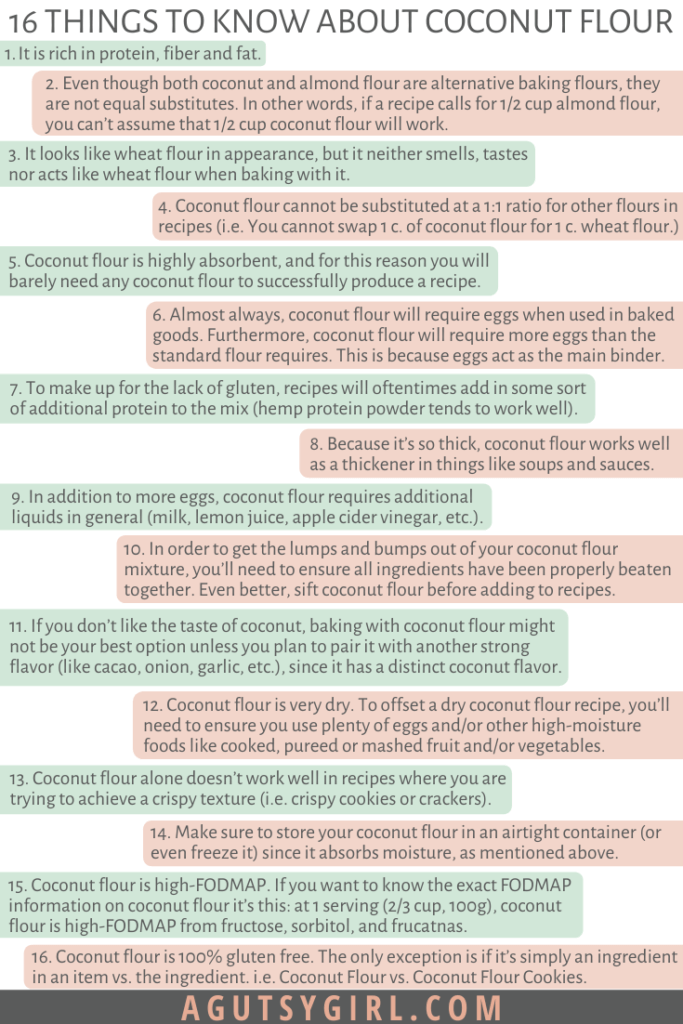
Coconut Flour Recipes
- Chocolate Protein Pancake Recipe {Gluten, Grain, and Dairy Free}
- Tomato and Basil No-Dough Pizza
- Strawberry Shortcake for One
- Oatless Protein Oatmeal
- The Leaky Gut Meal Plan book HERE: Autoimmune Paleo Bread, Perfect Vegan Banana Spoon Bread, Plantain Breakfast Muffins, Salmon Patties, Savory Turmeric Flatbread, and Tomato and Basil No-Dough Pizza.
It’s easy to find this flour these days as it has now become a common type of flour to use not only for the gluten-free baking community but for general bakers as well.
Where to Buy Coconut Flour
If you’re looking for a good quality option, I have 3 main sources that you can grab it from (both via the grocery store and online):
And also, as I mention above, look in general bulk bins at health food stores.
Since I used to work in the natural food industry, I know that oftentimes those bulk bins are the brand name products. The good news here is that you aren’t paying for the brand name you’re simply getting the finished product.
Baking: a healthier option
I’d like to feature more alternative baking items to help with all your baking needs.
I snapped these pictures of various baking ingredients.
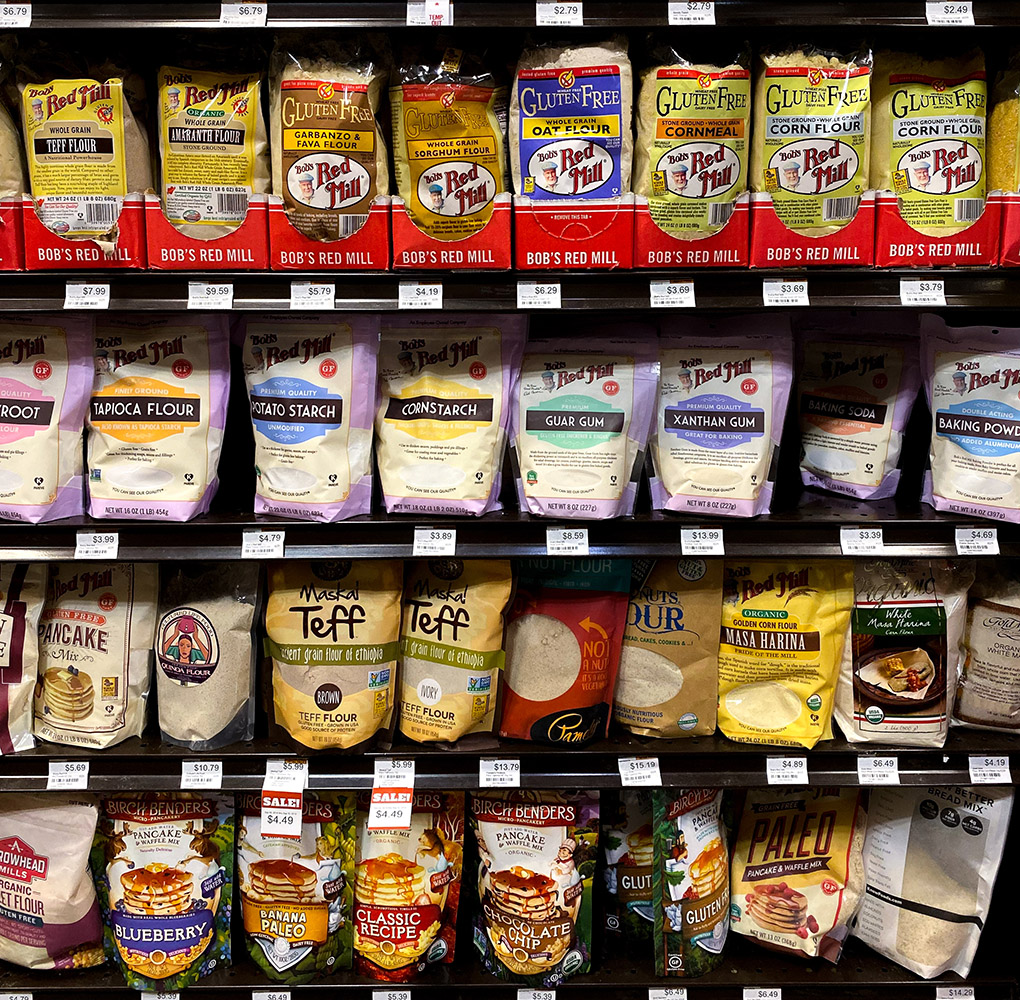
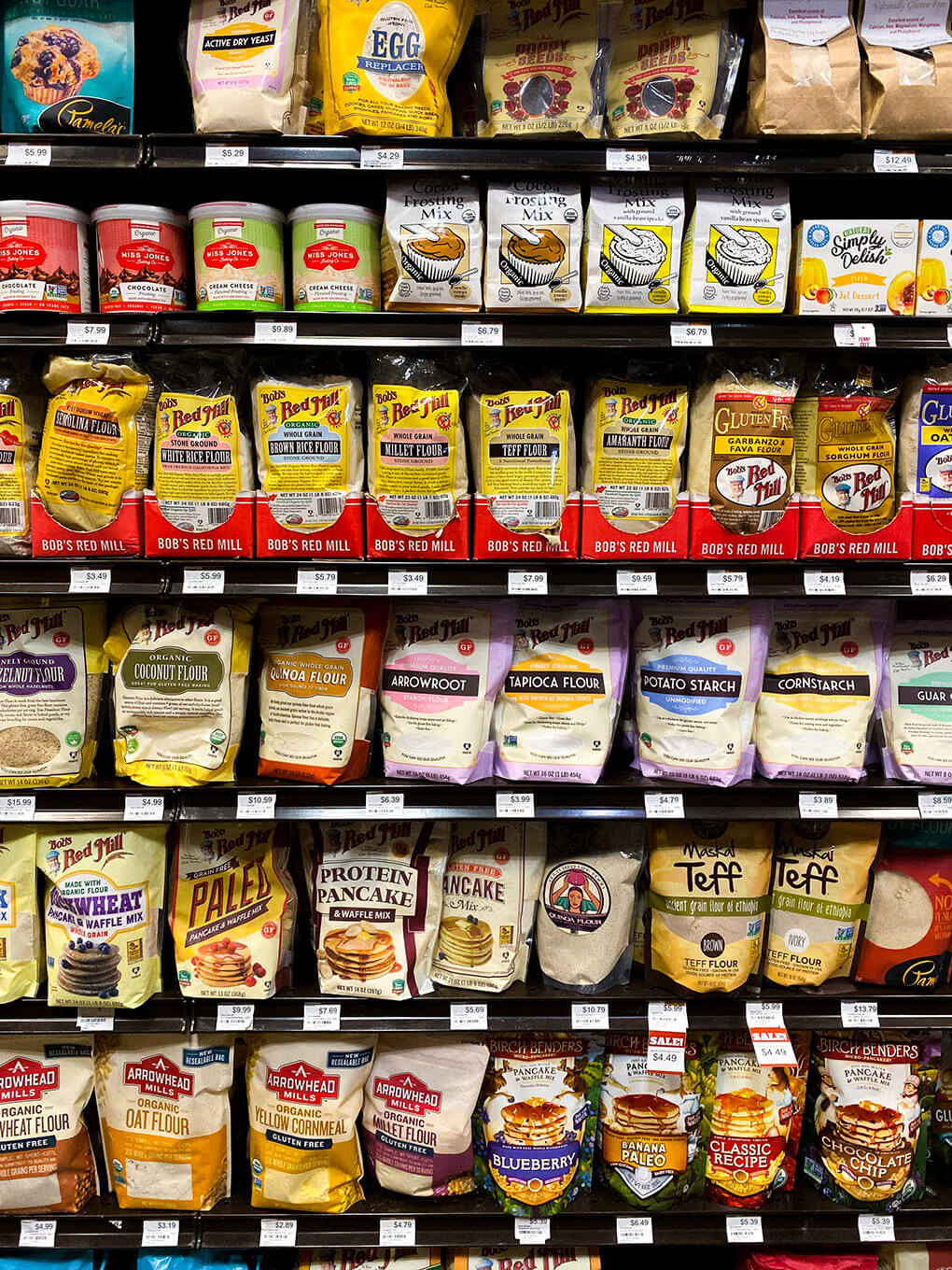
Let me know if you see one that you’d love me to write about.
If you liked this post, you might also enjoy:
Xox,
SKH

🤰 bloating be gone! weight loss through optimal gut health for women
💃ʜᴇᴀʟ ʏᴏᴜʀ ɢᴜᴛ. ʜᴇᴀʟ ʏᴏᴜʀ ʟɪfe.
🫶🏻 founder gutbyome.com

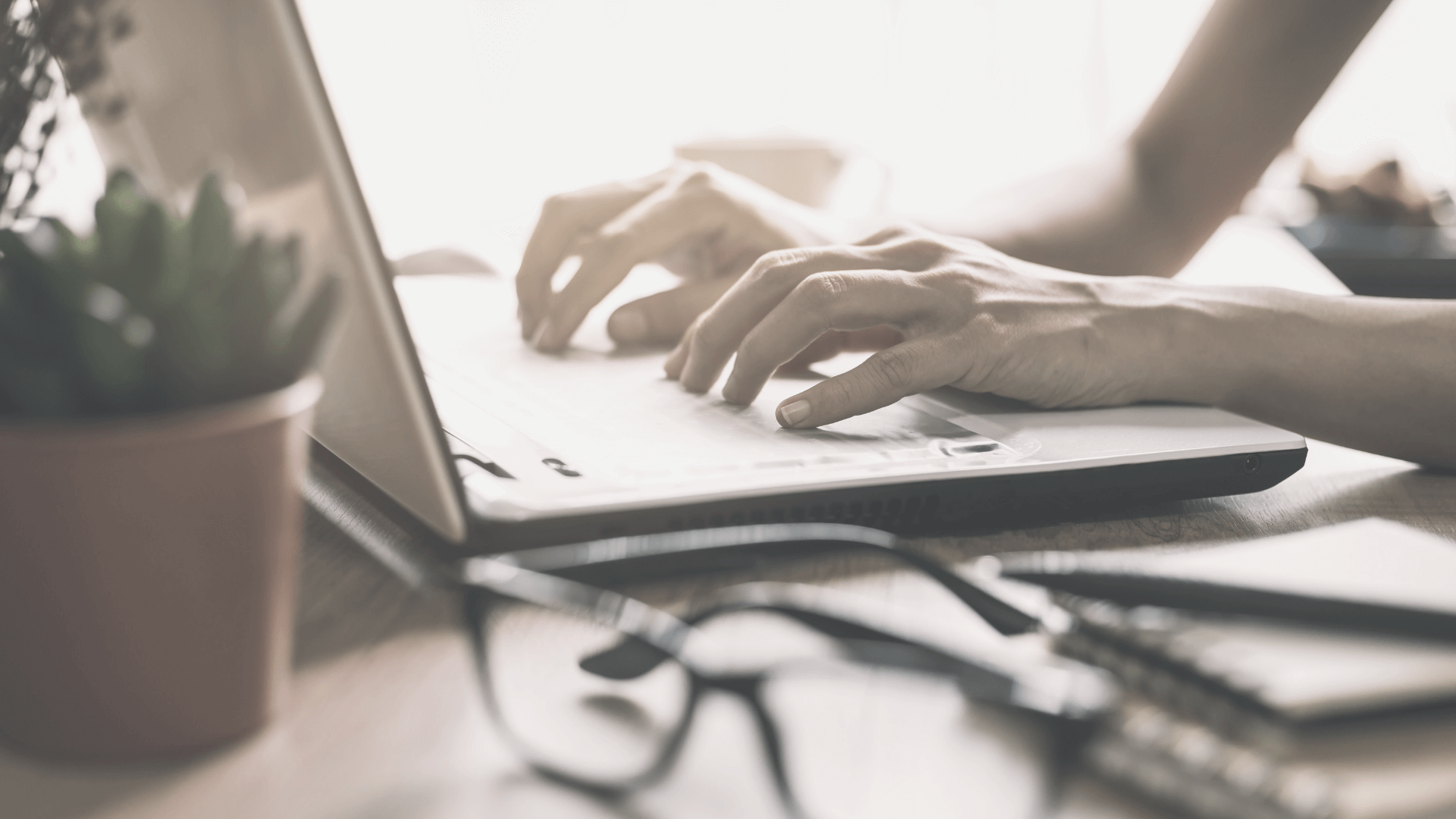
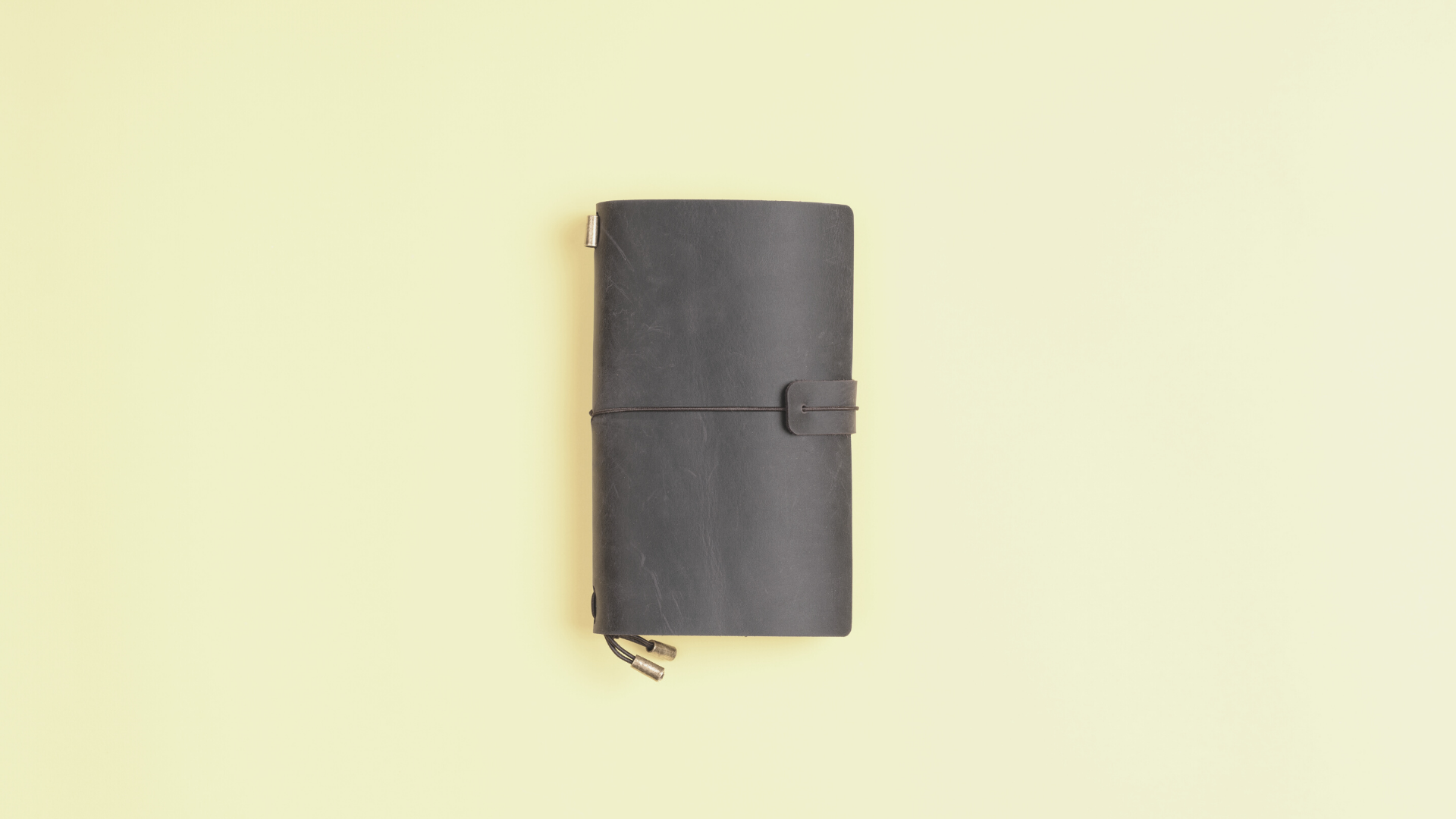



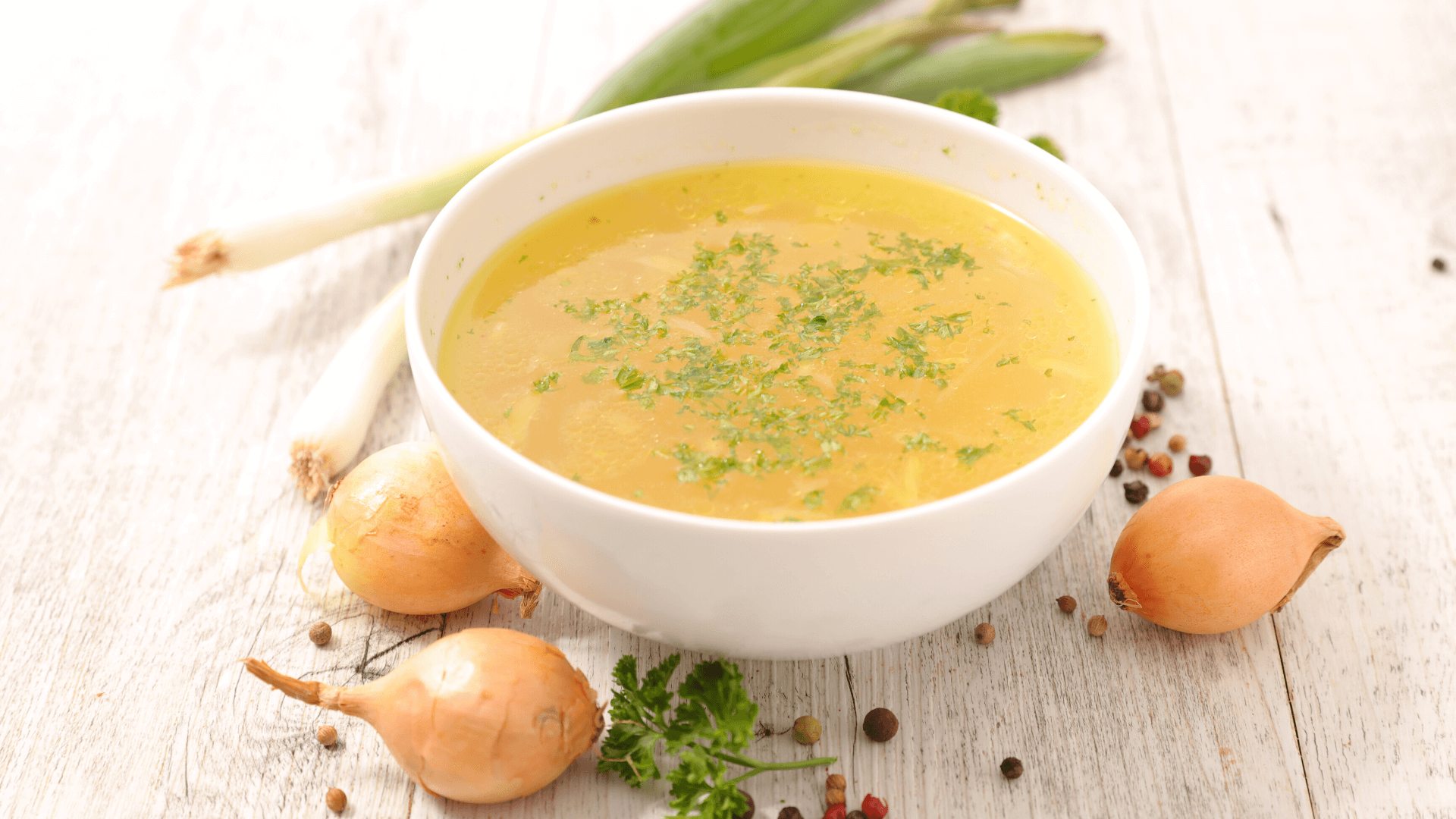
One Comment